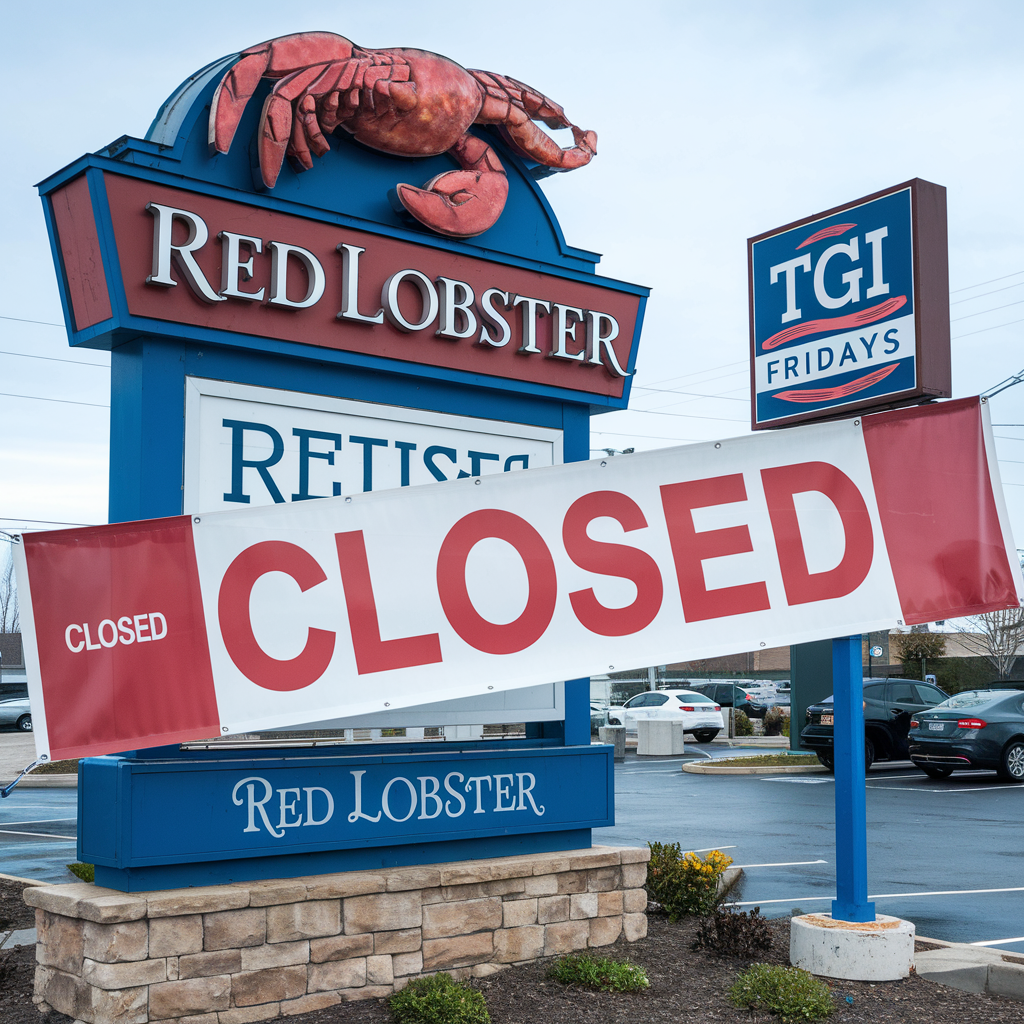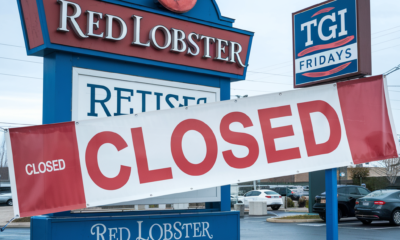Food
Cranberry Field Spiders: Nature’s Unsung Heroes in Our Bogs

Cranberry field spiders may not be the first creatures that come to mind when you think of vibrant cranberry bogs, but these eight-legged wonders play an essential role in this unique ecosystem. While we often admire the bright red berries and their culinary delights, it’s easy to overlook the intricate web of life supporting them beneath the surface. These spiders are nature’s unsung heroes, diligently maintaining balance within their watery realms. Join us as we unravel the mysteries surrounding cranberry field spiders and explore how they contribute to one of America’s favorite harvests. You might just find a newfound appreciation for these fascinating arachnids!
Cranberry Field Spiders: Nature’s Unsung Heroes in Our Bogs
Cranberry field spiders are often overlooked, yet they play a vital role in cranberry bogs. These small arachnids thrive in the moist, rich environment of the bogs, where their presence is crucial for maintaining balance.
As predators, they help control pest populations that can threaten delicate cranberry plants. By keeping these harmful insects at bay, cranberry field spiders ensure healthy crops and contribute to sustainable farming practices.
Their intricate webs capture not only pests but also showcase the beauty of nature’s design. Observing them as they navigate their silken traps adds an enchanting layer to the already captivating landscape of vibrant cranberries nestled among lush greenery.
What Is a Cranberry Bog?
Cranberry bogs are unique ecosystems, primarily found in North America. These wetlands are specifically designed to cultivate cranberries, a popular fruit known for its tart flavor and health benefits. The landscape is characterized by low-growing shrubs and acidic soils that create the perfect environment for cranberry plants.
During the growing season, bogs transform into vibrant patches of green dotted with clusters of pink flowers. Water management is essential here; fields are flooded during harvest time to facilitate berry collection. This careful balance between water levels supports both plant growth and wildlife habitats.
These bogs also play a vital role in local biodiversity. They provide shelter for various species, including insects and birds, creating an intricate web of life within their boundaries.
What Is a Bog Spider?
Bog spiders are fascinating arachnids that thrive in wetland ecosystems, particularly in cranberry bogs. These creatures belong to the Lycosidae family and are often mistaken for wolf spiders due to their similar appearance. They exhibit a range of colors, usually blending seamlessly with their surroundings.
These spiders prefer damp environments where they can hunt effectively. Their keen eyesight allows them to stalk prey with precision, capturing insects that frequent the bogs. Bog spiders play a vital role in maintaining ecological balance by controlling pest populations.
With unique adaptations for survival in moist habitats, these remarkable spider species contribute significantly to the health of our wetlands and agricultural areas alike.
How Are Cranberries Harvested?
Cranberry harvesting is a fascinating process that combines tradition with modern technology. The journey begins in late September through early November when the berries reach their peak ripeness.
Farmers flood the bogs with water, making it easier to collect the fruit. Cranberries naturally float due to air pockets within them, allowing machines called “harvesters” to gently sweep over the beds and dislodge the berries from their vines.
Once collected, cranberries are transported for processing or packing. Some are sold fresh while others may be turned into juice or sauce. This intricate method not only ensures quality but also highlights the importance of sustainable practices in agriculture.
The Intricate Role of Bog Spiders in Cranberry Bogs
Cranberry field spiders play a crucial role in maintaining the health of cranberry bogs. These skilled hunters feast on pests that threaten berry crops, ensuring a bountiful harvest. Their presence helps minimize the reliance on chemical pesticides, promoting a more sustainable farming practice.
As they weave their intricate webs among the vines and shrubs, these spiders contribute to the ecosystem’s balance. They attract various insects, creating a natural cycle that benefits both plants and animals within the bog.
Furthermore, by controlling pest populations, bog spiders support biodiversity. This interconnectedness fosters resilience in ecosystems under constant pressure from environmental changes and agricultural demands.
A Bog’s Mystical Ambiance: Setting the Stage
The moment you step into a cranberry bog, the world transforms. Mist hangs low over the water, creating an ethereal veil between reality and magic. The soft rustle of leaves and gentle lapping of water create a symphony that calms the mind.
Amidst this tranquil setting, colors burst forth in unexpected ways. Rich reds from ripe cranberries contrast with vibrant greens of moss and foliage. Sunlight filters through trees, casting dappled shadows that dance across the ground.
As day turns to dusk, the atmosphere shifts again. Sounds grow softer; nocturnal creatures awaken. This mystical ambiance invites exploration and contemplation—it’s a space where nature reveals its secrets slowly but surely.
Embracing the Eerie and the Essential
Cranberry field spiders often evoke feelings of unease. Their webs glisten like delicate lace, shimmering in the morning dew. This beauty can easily be overlooked when we focus solely on their eerie appearance.
Yet, these creatures play a vital role in maintaining balance within cranberry bogs. They keep pest populations at bay, protecting the crops that thrive in these unique ecosystems.
Embracing their presence means recognizing the harmony between nature’s design and our agricultural practices. Instead of viewing them as mere intruders, we can appreciate how they weave together the fabric of life in our wetlands.
Harnessing Nature’s Secrets: Non-toxic Solutions for Every Household
Harnessing nature’s secrets can transform your household into a safe haven. Instead of reaching for chemical-laden products, consider using simple ingredients like vinegar, baking soda, and essential oils. These natural alternatives are often just as effective at cleaning and disinfecting.
For pest control, many people overlook the power of plant-based solutions. Sprays made from garlic or peppermint can keep unwanted critters at bay without harmful side effects.
Additionally, creating a welcoming environment for beneficial insects—like cranberry field spiders—can help manage pests naturally. By embracing these non-toxic methods, you not only protect your family but also contribute to a healthier ecosystem surrounding your home.
Harmonizing with Nature: An Eco-Friendly Approach
Embracing an eco-friendly approach is vital for sustaining our natural ecosystems, especially in delicate environments like cranberry bogs. By using organic farming practices, we can cultivate healthy crops while preserving the habitat for essential creatures such as cranberry field spiders.
These spiders play a crucial role in maintaining ecological balance by controlling pest populations naturally. When we prioritize their presence, we’re not just protecting them; we’re enhancing the health of our entire bog ecosystem.
Adopting non-toxic methods and avoiding harmful chemicals allows both plants and wildlife to thrive. This harmony fosters a rich environment where biodiversity flourishes, benefitting generations to come.
Explore the World of Insects & Arachnids
The world of insects and arachnids is vast and fascinating. Each species contributes uniquely to the ecosystem, often in ways we might overlook. Cranberry field spiders are just one example of how these creatures play a vital role in maintaining balance within their habitats.
Exploring this realm opens the door to understanding complex interactions between flora and fauna. From pollinators that help plants thrive to predators like our bog spiders that control pest populations, every organism has its place.
As you wander through nature or your own backyard, take a moment to appreciate these unsung heroes. They may not always be front and center, but they are essential for creating vibrant ecosystems. Engaging with this hidden world can enhance our appreciation for biodiversity while encouraging responsible stewardship of our environment.
Food
Red Lobster TGI Fridays Closing: Industry Shifts

The restaurant industry has seen significant changes over the past few years, and the recent news of Red Lobster TGI Fridays closing has sparked widespread discussion. These iconic chains, known for their casual dining experiences, have faced numerous challenges that have led to this decision. In this article, we will explore the reasons behind the closures, the impact on the industry, and what it means for customers and employees.
The Rise of Red Lobster and TGI Fridays
Red Lobster and TGI Fridays have long been staples in the casual dining scene. Red Lobster, founded in 1968, became famous for its seafood offerings, particularly its Cheddar Bay Biscuits and endless shrimp promotions. Similarly, TGI Fridays, established in 1965, gained popularity for its lively atmosphere, signature cocktails, and American-style dishes. For decades, these chains thrived, attracting families, friends, and tourists alike.
However, the restaurant landscape has evolved dramatically. The rise of fast-casual dining, changing consumer preferences, and economic challenges have forced many traditional chains to rethink their strategies. Unfortunately, Red Lobster and TGI Fridays have not been immune to these shifts.
Challenges Leading to the Closures
Several factors have contributed to the decision to close numerous Red Lobster and TGI Fridays locations. First, the COVID-19 pandemic dealt a severe blow to the restaurant industry. Lockdowns, social distancing measures, and reduced dining capacity led to significant revenue losses. While some chains adapted by offering takeout and delivery options, others struggled to stay afloat.
Second, changing consumer preferences have played a role. Many diners now prioritize healthier options, locally sourced ingredients, and unique dining experiences. Unfortunately, Red Lobster and TGI Fridays have been perceived as outdated by some customers, who view their menus as lacking innovation.
Third, rising operational costs have added to the pressure. Inflation, increased wages, and supply chain disruptions have made it difficult for these chains to maintain profitability. As a result, many locations have been forced to close their doors.
The Impact on Employees
The closures of Red Lobster and TGI Fridays locations have left thousands of employees without jobs. For many, these restaurants were more than just workplaces; they were communities where friendships were formed and memories were made. The sudden loss of employment has created financial uncertainty for workers and their families.
While some employees may find opportunities at other locations or within the industry, the closures highlight the need for better support systems. Job training programs, financial assistance, and career counseling could help ease the transition for affected workers.
The Effect on Customers
For loyal customers, the closures are a significant loss. Red Lobster and TGI Fridays have been go-to destinations for birthdays, anniversaries, and casual dinners. The nostalgic value of these chains cannot be overstated, and many customers are saddened by the news.
However, the closures also present an opportunity for customers to explore new dining options. Local restaurants, food trucks, and emerging chains are stepping up to fill the void, offering diverse menus and unique experiences. While change can be difficult, it often leads to growth and innovation.
The Broader Impact on the Restaurant Industry
The closures of Red Lobster and TGI Fridays locations are indicative of broader trends in the restaurant industry. Casual dining chains are facing increased competition from fast-casual restaurants, which offer quicker service and often healthier options. Additionally, the rise of food delivery apps has changed how people dine, with many opting to eat at home rather than visit traditional restaurants.
To survive, many chains are reevaluating their business models. Some are focusing on digital transformation, investing in online ordering systems and loyalty programs. Others are revamping their menus to cater to changing tastes. While these changes may not guarantee success, they demonstrate the industry’s resilience and adaptability.
Lessons Learned from the Closures
The closures of Red Lobster and TGI Fridays locations offer valuable lessons for the restaurant industry. First, innovation is crucial. Chains must continuously evolve to meet customer expectations and stay relevant. This could involve updating menus, enhancing the dining experience, or embracing new technologies.
Second, financial stability is essential. Restaurants must carefully manage costs and plan for economic uncertainties. This includes negotiating favorable supplier contracts, optimizing staffing levels, and maintaining a strong balance sheet.
Finally, customer loyalty should not be taken for granted. While nostalgia can drive business, it is not enough to sustain long-term success. Chains must actively engage with their customers, listen to feedback, and deliver consistent value.
What the Future Holds
Despite the challenges, the restaurant industry remains a vital part of the economy. While the closures of Red Lobster and TGI Fridays locations are undoubtedly significant, they also pave the way for new opportunities. Emerging chains, innovative concepts, and local eateries are poised to shape the future of dining.
For Red Lobster and TGI Fridays, the focus will likely be on restructuring and rebranding. By addressing the issues that led to the closures, these chains may be able to regain their footing and attract new customers.
Conclusion
The news of Red Lobster TGI Fridays closing marks the end of an era for many diners and employees. However, it also serves as a reminder of the ever-changing nature of the restaurant industry. By learning from these closures and embracing change, the industry can continue to thrive and provide memorable experiences for generations to come.
See Also At Thestepbox
-

 Food4 months ago
Food4 months agoRed Lobster TGI Fridays Closing: Industry Shifts
-

 News4 months ago
News4 months agoMyGreenBucks Kenneth Jones: Financial Tips and Success Stories
-

 Technology4 months ago
Technology4 months agoAdsy.pw/hb3 Explained: Supercharge Your Online Growth
-

 News4 months ago
News4 months agoPrincess Kazer: The Untold Story of Her Legacy
-

 News4 months ago
News4 months agoHcooch ch2 h2o: Understanding Its Role in Chemistry
-

 News4 months ago
News4 months agoShannon Reardon Swanick: Her Inspiring Journey
-

 Technology4 months ago
Technology4 months agoUnlock the Future: Tech theboringmagazine Explained
-

 News4 months ago
News4 months agoUnlock the Power of Pernithia Galnith Today
